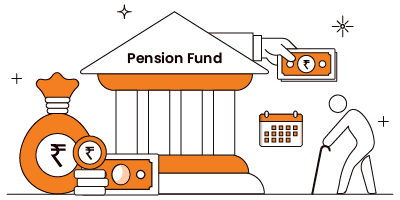Pension funds stand as pivotal pillars in securing financial stability for individuals during retirement years. These funds represent long-term savings vehicles, ensuring a steady income post-retirement, and have played a significant role in financial planning for individuals, employees, and retirees. Let’s explore the essence, functions, significance, and evolving landscape of pension funds in securing retirement finances.
Understanding Pension Funds
Defined Benefit vs. Defined Contribution Plans:
Pension funds come in various forms, with defined benefit plans guaranteeing a specific payout upon retirement, while defined contribution plans accumulate funds based on contributions and investment returns.
Institutional Investors:
Pension funds are managed by institutional investors, such as governments, corporations, or unions, with the objective of providing retirement benefits for employees or members.
Long-Term Investment Vehicles:
They serve as long-term investment vehicles, accumulating savings over an individual’s working years to provide income during retirement.
Diversified Investment Portfolios:
Pension funds typically invest in diversified portfolios, including stocks, bonds, real estate, and other asset classes to achieve growth and manage risks.
The Significance of Pension Funds
Retirement Security:
Pension funds offer a sense of financial security during retirement, providing a regular income stream to retirees.
Social Safety Net:
They serve as a social safety net, supplementing other retirement income sources like social security or personal savings.
Employee Benefits:
Employer-sponsored pension plans are often part of employee benefits, attracting and retaining talent within organizations.
Economic Stability:
By encouraging long-term savings and investments, pension funds contribute to economic stability and capital market growth.
Functions and Management
Contribution and Investment:
Employees and employers make contributions to pension funds, which are then invested by fund managers to generate returns over time.
Risk Management:
Fund managers employ risk management strategies to balance risks and returns, ensuring the fund’s sustainability and meeting future obligations.
Regulatory Compliance:
Pension funds are subject to regulatory oversight, ensuring compliance with laws, disclosure requirements, and fiduciary responsibilities.
Retirement Payouts:
Upon retirement, beneficiaries receive periodic payments or a lump sum based on the accumulated funds and the pension plan’s terms.
Evolving Landscape and Challenges
Demographic Shifts:
Challenges arise from demographic changes, such as aging populations and longer life expectancies, impacting fund sustainability.
Investment Challenges:
Low-interest rates, market volatility, and economic uncertainties pose challenges in generating sufficient returns to meet pension obligations.
Regulatory Reforms:
Changes in regulations, accounting standards, and governance frameworks affect pension fund management and operations.
Sustainability and Adequacy:
Ensuring pension funds remain sustainable and provide adequate income in the face of changing economic and market conditions.
Conclusion
Pension funds play an integral role in individuals’ financial well-being during retirement, providing a safety net and income security after years of service. While they offer stability and social benefits, evolving economic landscapes and demographic shifts pose challenges for their sustainability. Navigating these challenges requires prudent fund management, adaptive investment strategies, regulatory compliance, and innovative approaches to meet the changing needs of retirees. As pension funds continue to evolve, they remain a critical element in securing retirement finances, emphasizing the importance of long-term planning and investment for financial security in the golden years.

